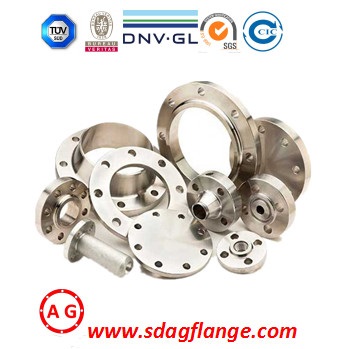

Blind flange, as an important component used to seal pipeline openings, has a diverse range of production processes, each with its own unique characteristics.
When producing forged blind flange, high-quality steel billets need to be selected first. This step is crucial, just like selecting a sturdy cornerstone for a building, only high-quality steel billets can lay a solid foundation for subsequent processing. After cutting, heat the steel billet to the appropriate temperature. At this point, the steel billet is endowed with "plasticity" and becomes soft at high temperatures, making it easier for subsequent shaping operations. Next, it is formed through processes such as free forging, die forging, or membrane forging. Free forging is like a skilled craftsman, using simple tools to create relatively simple shaped single piece or small batch produced forgings; Forging is like a modern production line, with high production efficiency, easy operation, and the ability to easily achieve mechanization and automation. It produces forgings with high dimensional accuracy and small machining allowances, and the fiber structure distribution of the forgings is more reasonable, greatly improving the service life of the parts. Cooling after forging is also a key step. Appropriate cooling methods can ensure the stability of the internal structure of forgings, giving them good mechanical properties such as high strength and good toughness, resistance to rust, and the ability to withstand higher shear and tensile forces. They are commonly used in pipeline systems that require high strength and sealing, such as high-temperature and high-pressure pipelines in the petrochemical industry.


Application areas:
Blind flange has a wide range of applications in many fields due to its reliable sealing performance and isolation effect.
(1) Petrochemical industry
In the field of petrochemicals, the medium transported in pipelines often has characteristics such as flammability, explosiveness, high temperature and pressure, and strong corrosiveness. Blind flange can accurately seal pipeline openings during equipment maintenance and pipeline upkeep, effectively blocking the flow of media and creating a safe working environment for workers. For example, when conducting maintenance on a reaction tower, installing blind flanges at the connecting pipes can prevent the leakage of harmful media inside the tower and ensure the smooth progress of maintenance work; Blind flange can be used to isolate the running pipeline section during the renovation or expansion of the pipeline system, ensuring that the construction process does not affect the normal production of other parts.
(2) Power industry
The pipeline system in the power industry also relies on blind flanges. In the steam pipeline, circulating water pipeline and other systems of power plants, when regular maintenance, overhaul or replacement of components are required, blind flanges can seal the pipelines to prevent leakage of steam, water and other media, ensure the safety of maintenance work, and guarantee the stable operation of power production. In addition, blind flanges are also used for strength and tightness tests of pipeline systems during the construction of new power plants, ensuring that pipelines can operate safely and reliably after being put into use.
(3) Construction field
In the field of construction, blind flange is mainly used in water supply and drainage pipeline systems. During the installation of pipelines in buildings, it is sometimes necessary to temporarily seal some pipelines for other construction operations, and blind flanges can play this role. For example, when installing underground drainage pipelines, blind flanges can be installed at both ends of the pipeline to prevent water flow and facilitate the operation of construction personnel when adjusting or repairing a certain section of the pipeline. At the same time, in the acceptance process of building pipeline systems, blind flanges are also used for pressure testing of pipelines to ensure that the sealing and strength of the pipeline system meet the requirements.
(4) Wastewater treatment
In sewage treatment plants, blind flange is used to isolate and control the water flow between different treatment units. In various stages of sewage treatment, such as sedimentation, filtration, disinfection, etc., it is necessary to separate the water flow of different treatment stages to ensure the normal operation of the treatment process. Blind flange can be installed on pipelines connecting different processing units, and can be opened or closed as needed to achieve effective control of water flow. For example, when a processing unit needs equipment maintenance or cleaning, it can be isolated from other units by installing blind flanges to avoid sewage backflow or cross contamination, ensuring the stable operation of the entire sewage treatment plant.

